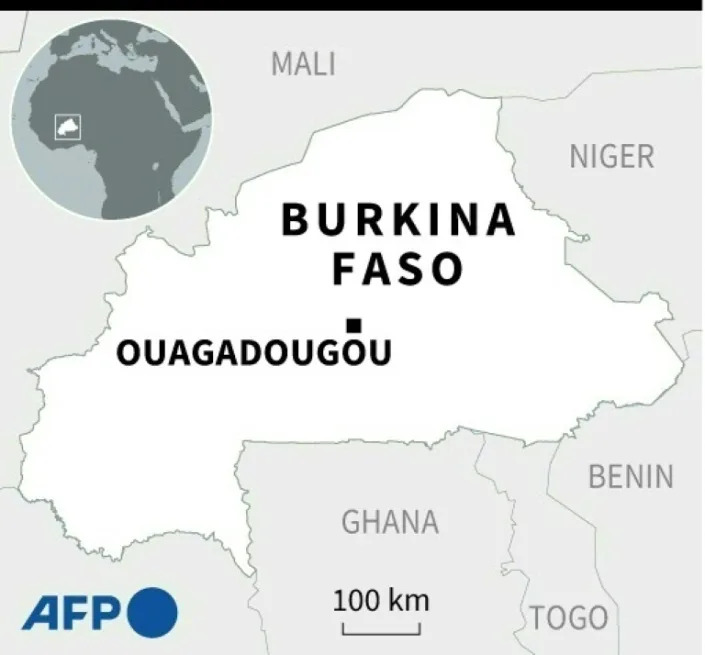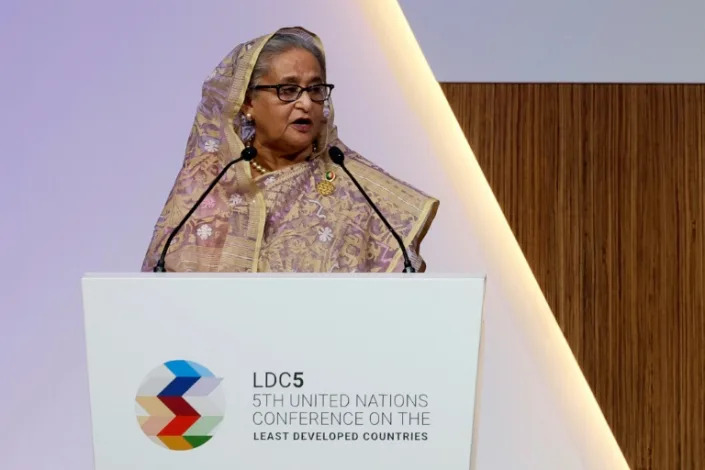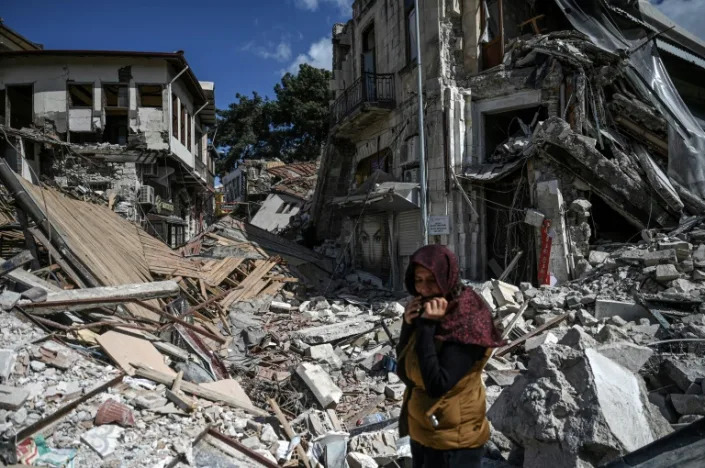Israel president says judicial compromise 'closer' as protests escalate
Mon, March 6, 2023
By Steven Scheer
JERUSALEM, March 6 (Reuters) - Israeli President Isaac Herzog on Monday said a compromise in the government's judicial overhaul plan could be imminent even as protests against the reform continued to spread.
Local media circulated a letter by 10 former air force chiefs to Prime Minister Benjamin Netanyahu warning of the "grave and tangible" threat posed by the judicial overhaul plan, a day after reservists said they would not turn up for training in protest.
In a statement late on Monday, Netanyahu criticised the threats to refuse military service, which he said endangered Israel's existence.
On the battlefield, soldiers have stood united "throughout all of Israel's wars, regardless of the struggles and disagreements among us," he said, speaking from a Border Police base in the occupied West Bank settlement of Beit Horon.
"There is room for protest, there is room for disagreements, for expressing opinions, but there is no room for refusal."
Although the presidency is a ceremonial post, Herzog convened 100 heads of authorities for an emergency meeting designed to come up with a solution to proposals that have split the country and led to mass nationwide protests.
"We are closer than ever to the possibility of an agreed outline. There are agreements behind the scenes on most things," Herzog said in a statement, without giving details.
Herzog's comments sent financial markets sharply higher even though there was no immediate sign of a deal between the government and opposition.
He said it would now depend on leaders of the ruling coalition and opposition to "put the country and the citizens above everything else" and implement it, adding that his plan works to placate both sides.
Heads of the opposition Yair Lapid and Benny Gantz issued a joint statement in response, commending the president's efforts to reach a compromise but demanding that Netanyahu halt the legislation process to allow for "honest and effective dialogue".
"Israel is on the brink of a national emergency - and Netanyahu refuses to stop," they wrote on Twitter.
Netanyahu did not immediately respond to Herzog's efforts.
Herzog last month floated a compromise plan to spare the country what he described as a "constitutional collapse".
The judicial overhaul plan, which has already received initial parliamentary approval, would give the government greater sway on selecting judges and limit the power of the Supreme Court to strike down legislation.
Critics of the planned law changes say Netanyahu - on trial on graft charges that he denies - is pursuing steps that will hurt Israel's democratic checks and balances, enable corruption and bring diplomatic isolation.
Proponents say the changes are needed to curb what they deem an activist judiciary that interferes in politics.
Lapid has called for compromise talks and a freeze of the legislation for 60 days but Netanyahu said he would only agree to negotiations without preconditions.
Optimism over a possible compromise riled financial markets and sent the shekel up 2% on Monday to 3.59 per dollar - its strongest level since Feb. 21. Similarly, Tel Aviv share indexes were up 1.5% and government bond prices were also up close to 1%.
Since the proposals were introduced in late January, the shekel has slumped against the dollar, alarming investors wary that Israel might be joining the growing list of emerging markets taking a more authoritarian stance to decision making.
By last week, the shekel had fallen nearly 10% against the U.S. currency in just one month, and was trading at a three-year low.
(Reporting by Steven Scheer and Henriette Chacar; Editing by Angus MacSwan and Christina Fincher)
Israeli reserve pilots ditch drill in protest at judicial overhaul
Sun, March 5, 2023
By Dan Williams
JERUSALEM (Reuters) -Dozens of Israeli air force reservists said on Sunday they would not turn up for a training day in protest against Prime Minister Benjamin Netanyahu's judicial reforms, a jolt for a country whose melting-pot military is meant to be apolitical.
As Israel's strategic arm, the air force has traditionally relied on reservists in wartime and requires crews who have been discharged to train regularly in order to maintain readiness.
But in a letter circulated in local media, 37 pilots and navigators from an F-15 squadron said they would skip drills scheduled for Wednesday and instead "devote our time to dialogue and reflection for the sake of democracy and national unity".
The religious-nationalist government seeks changes that include curbs on the Supreme Court, which it accuses of over-reach. Critics worry that Netanyahu - who is on trial on graft charges he denies - wants excessive power over the judiciary.
Weekly and increasingly raucous demonstrations have swept the country, with some protest leaders - among them former military chiefs - saying that a non-democratic turn in government would warrant mass-disobedience within the ranks.
The 37 air force reservists said they would suspend their one-day protest if required to carry out actual operations.
A military spokesperson declined to comment on their letter but said top commander Lieutenant-General Herzi Halevy "is aware of the public discourse and division but will not allow any harm to the IDF's (Israel Defence Forces) ability to carry out its most important mission - defend(ing) Israel's security".
Officers had been instructed to speak with subordinates on the issue, said the statement, which also reiterated the "importance of maintaining the IDF’s impartiality".
Israel does not publish military personnel figures, making it hard to judge to impact of the air force reservists' protest, or of similar pledges by some reservists from other branches.
"These irresponsible Israeli media are playing up any reservist who makes some kind of statement," Finance Minister Bezalel Smotrich told Channel 12 TV.
"There are tens and hundreds of thousands who will continue to enlist for the military and serve in the reserves and understand that we are brothers and bear responsibility for the great miracle that is the Zionist enterprise."
Netanyahu, a former officer in Israel's most prestigious commando unit, tweeted a photograph of himself at conscription age with the caption: "When called up for reserve duty, we always turn up. We are one nation."
Meanwhile, Israel's N12 News reported that El Al Israel Airlines was having trouble finding a crew to fly Netanyahu on a state visit to Italy this week, because of a boycott by pilots over the judicial overhaul.
Netanyahu's office did not respond to a request for comment.
El Al said it would not support boycotts "particularly against the prime minister of Israel", and that the flight had been staffed and would depart as planned.
(Writing by Dan Williams; Editing by Christina Fincher and Alexander Smith























